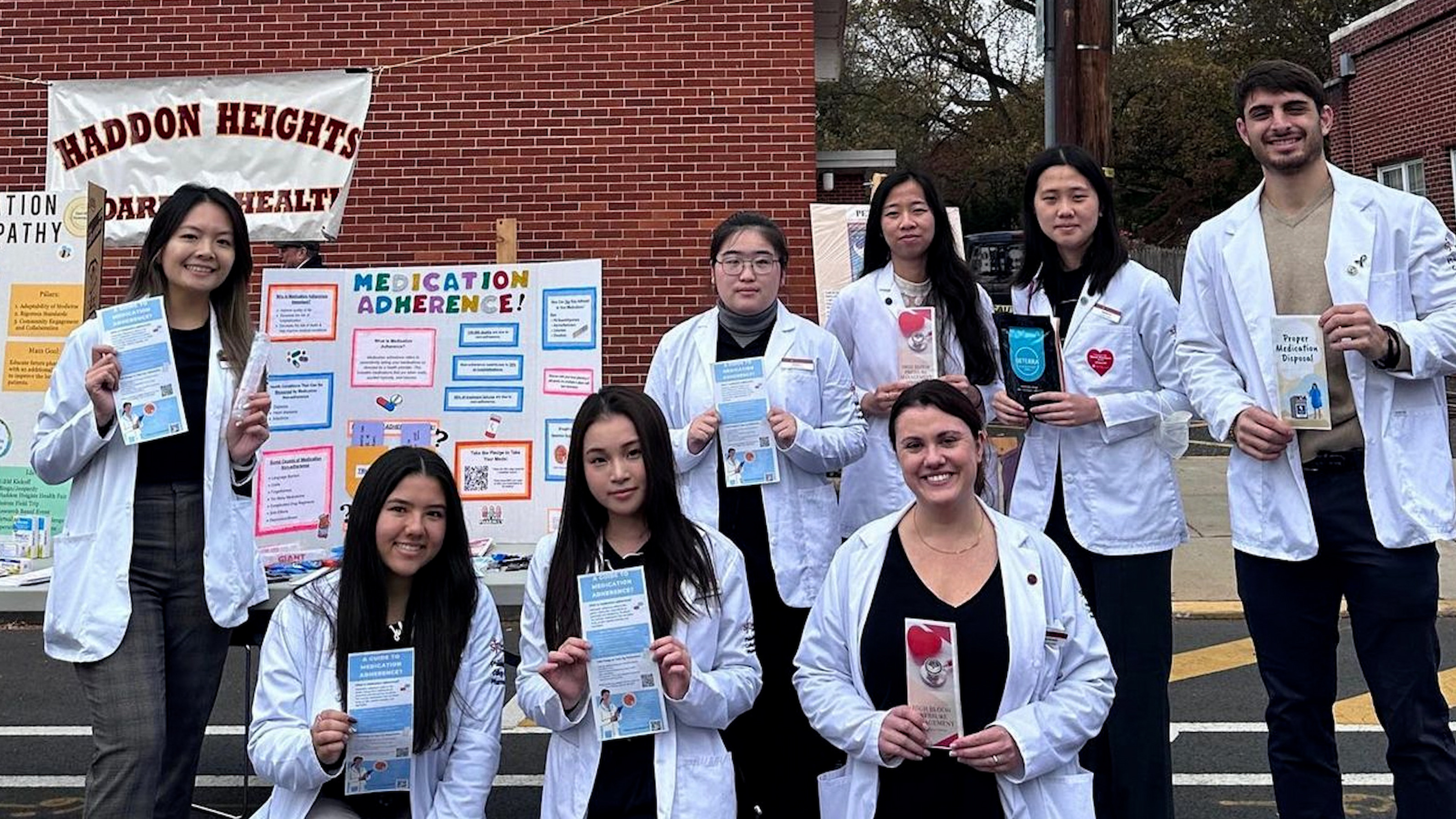Occupational Therapy Simulation Apartment Uncovers, Solves Everyday Obstacles
Saint Joseph’s trains occupational therapy students through simulation exercises in its simulation apartment, where future OTs can put themselves in a client’s proverbial shoes to experience the different interventions they may need to retain independence and self-sufficiency in their daily lives.
Occupational therapists help clients develop the functional capacity to live independently, care for personal needs and participate in work, school or community activities. One way Saint Joseph’s Department of Occupational Therapy (OT) trains its students is through simulation exercises. To support these efforts, OT students are given access to different labs and facilities in Glasser/Woodland Hall to develop and practice using adaptive devices.
One of those facilities is a simulation apartment where future OTs can put themselves in a client’s proverbial shoes to experience the different interventions they may need to retain independence and self-sufficiency in their daily lives.
GETTING READY FOR THE DAY
The OT simulation apartment includes a bedroom set where OTs can test out adaptive devices that will be used on a daily basis for dressing.
“Occupational therapists help individuals regain or improve self-care activities,” notes Lynda Lemisch, OTD, assistant professor of occupational therapy. “Therapies like these are called dressing occupations, since they occupy the therapist’s and client’s time getting dressed and undressed.”
Under the supervision of Sheetal Parikh, OTD, assistant professor of occupational therapy, Brice Tarleton, DrOT, sits on a bed while Elizabeth (Lizzie) Brown-Cordero '24, DrOT, shows him how to use an adaptive dressing stick to remove his socks. This tool is used when flexing over and forward is too painful or a client’s range of motion is too limited due to back, hip or abdominal issues.
ALL IT TAKES TO MAKE A MEAL
The simulation kitchen area offers OTs the ability to test out adaptive technologies that make cooking a more independent process for clients.
"The simulation kitchen is filled with utensils that have been adapted to fit the needs of those post stroke, with weakness, arthritis, paralysis and other conditions," notes Livia Mario '24, DrOT. "These spaces allow us to practice using these tools to ensure we are able to transfer our learned skills into our occupational therapy practice."
Here, Lemisch models an adaptive device for a client who may be unable to grasp or use their fingers. This spoon is affixed to a universal cuff that can be placed across the palm of a client’s hand and secured at the back to stabilize any cookwork being done — it can also be used on a toothbrush, writing tool, etc.
“Motion comes more from the shoulder and elbow when distal parts of the arm are compromised,” notes Lemisch.
The pot on the stove is also using a device that suctions to the stove to stabilize it. This is a great resource for clients who may only have use of one arm.
CUTTING AND PREPPING FOOD
Adaptive cutting boards can be recommended by OTs for those who have loss of function of one arm. These cutting boards have walls and spikes that can stabilize food that is being prepared, enabling independence.
TACTILE MARKERS AND INCREASED COLOR CONTRAST
Here, Mario indicates a raised, red dot that has been strategically placed on the oven in the simulation kitchen to improve a client’s ability to set dials and use the appliance safely and independently.
“When a client has low vision, which is a progressive consequence of macular degeneration or glaucoma or diabetes, exaggerating textures makes use of a compensatory sense of touch,” explains Lemisch. “Increasing the color contrast can also help them determine boundaries and the edges of the dial’s position.”
SITTING DOWN TO EAT
The simulation dining area gives OTs an opportunity to practice using adaptive tools for eating and drinking that help individuals regain or improve self-feeding.
Built-up handles, angled utensils and scoop dishes help compensate for weakness or lack of joint mobility. Various adaptive cups can improve safe swallowing and accuracy with hand to mouth movements.
Here, Lemisch shows Omotola Emmanual ’24, DrOT, how food can be presented in color contrasting ways to help those with low vision to improve their self-feeding and self-drinking occupations.
Lemisch has poured Coca-Cola into the white mug and milk in the blue mug.
“Imagine if this were the opposite,” says Lemisch. “A client with low vision might think there was nothing in the mug or would tip it too severely without knowing the level of the liquid.”
Learn more about Saint Joseph’s OT programs and OT facilities, including a pediatric simulation lab.



